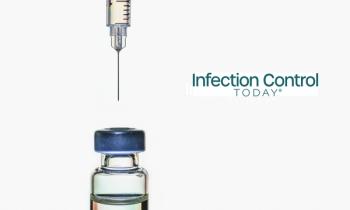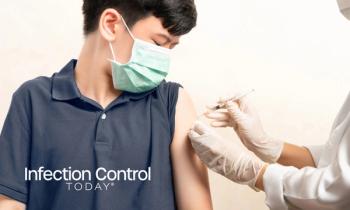
From the Frontlines: Insight Into Infection Prevention During COVID-19 Pandemic
In a conversation with Infection Control Today, Saskia v. Popescu, PhD, MPH, MA, CIC, a senior infection prevention epidemiologist in Phoenix, Arizona, discusses what it’s like for these frontline fighters.
In a conversation with Infection Control Today’s Editorial Director Allie Ward, Saskia v. Popescu, PhD, MPH, MA, CIC, a senior infection prevention epidemiologist in Phoenix, Arizona, discusses what it’s like for these frontline fighters and what we can do to “flatten the curve.”
Infection Control Today®: In the middle of this coronavirus outbreak right now, can you kind of give me a sense of what your day-to-day is normally like in these types of situations?
Popescu: It's pretty chaotic, and it changes every single moment of every single day. But a lot of it is just constantly checking in on staff who are caring for suspected or confirmed COVID-19 cases, [and] making sure that lab testing process is working well, because a lot of it is not just getting the testing operational through commercial lab tests, but also making sure we're getting the results back, they're being fed into electronic medical records, the physicians are aware…little nuances like that.
And checking personal protective equipment (PPE) supplies constantly. It's a lot of education and making sure staff feel comfortable with these new and kind of different processes because we're doing things that we normally don't do in non-pandemic situations. It’s chaotic.
Infection Control Today®: We’re seeing a lot about that right now about masks and about PPE. Are you concerned about the availability or possible shortages?
Popescu: I think everybody is. There are international and national shortages right now, especially for masks, for the N95s and for surgicals. And that's really challenging for healthcare workers because, in the past-and I've been kind of reiterating this with staff who feel very uncomfortable reusing and extended using the N95-we took that for granted. These masks are rated for extended use, but because we've never had issues with supplies, the practice was always “wear it into the patient's room and toss it when you get out.” But now we're having to go against that. And I think it's this weird mixture of we're all very concerned about PPE supplies but also having to make sure staff feel comfortable with reusing and extended use and most hospitals and infection control programs right now are looking at it at least once or twice a day in terms of how many masks do we have? What are our PPE supplies? How can we be better stewards of our resources?
Infection Control Today®: We're also hearing a lot right now about focus on “flattening the curve.” Can you talk a little bit about efforts to do that?
Popescu: In epidemiology, the concern is always trying to decrease or flatten that big spike in cases, that curve, and so that you can kind of keep it under what our capabilities and response mechanisms are, and that's mostly in healthcare. What we want to do is try and have everybody practice those good infection control measures like social distancing, staying home when you're sick, washing your hands. Those are big pieces that really help flatten the curve.
But also, a piece that we don't tend to talk about is, don't go to the emergency department if you're doing okay. If you have a cough and a slight fever, and you just need to stay home and rest, please do that. Save the emergency department visits for really severe illness or if you're experiencing challenges breathing or a really high fever because what we're seeing right now, and some of the syndromic surveillance coming out of New York City's health department showed, [was] there was a 50% spike in those with influenza-like illness going to emergency departments. And a lot of this is COVID-19 testing seeking behavior because people just want to get tested because they don't feel well so they think they might have it. But that really overwhelms the hospital system.
I'm encouraging people, if you're not really that sick, if you wouldn't be going to the emergency department outside of this situation, maybe don't. Call your primary care physician, go to an urgent care if you need some help, unless it's obviously life threatening or you're critically ill; we want people to go to the hospitals for that. But if you're just experiencing these mild symptoms, going to the emergency department is really overwhelming that and that's the challenge with flattening the curve too, is because that's really stressing our capabilities. On top of it, you might be exposed to other things or exposing others to whatever you might be experiencing.
Plus, it burns through our PPE a lot because every patient that comes in with a cough and a fever needs to be responded to with isolation precautions. That's kind of the challenge I'm seeing right now, and really our efforts to flatten the curve are so dependent upon people following those best practices. Stay at home when you're sick. Everyone's on quarantine right now and working remotely. I'm seeing the #QuarantineLife is pretty entertaining. But I'm glad to see people heeding that and really avoiding those large gatherings and actively working to prevent the spread.
Infection Control Today®: What's the single most important thing that you want people to know right now from an infection prevention standpoint?
Popescu: The piece I mentioned about emergency departments is really big because I don't think people realize when they go in with a mild cough and a little bit of a fever, if anything, how impacting that is, how stressful that is on the hospital because it's not just you. It's dozens of other people in that hospital on a daily basis and we need to save our PPE for our healthcare workers. I cannot stress that enough. But also, this is a really novel situation. And we're all working within pretty significant constraints in terms of PPE, changing guidance, and a lot of stress and fear factor. So I encourage people to [not] hit the panic button, we have response mechanisms in place, and I always remind my healthcare workers [that] this is not a new isolation precaution. This isn't Ebola where we were learning totally new precautions as we were going. Everybody knows how to use these isolation precautions because they've been doing them for years. We just need to be really vigilant with them.
Your infection control team is a really good resource for you. We’re working in the trenches with you. Know that our goal is always to protect our healthcare workers and protect our patients. And some of this involves some weird nuances that we're not super used to because it's a pandemic, but the goal is to always keep people safe. Just kind of trust that guidance and I think part of it is also being mindful of what you hear and see on social media, in the news because it is very easy to get a lot of hysteria reporting or bad science communication. I think it's important to be mindful of that because I see some people who are just like, “It's airborne!” That's not the case. We're talking about aerosol-generating procedures, which are very specific to healthcare, little things like that. It's so important to be mindful of the information you're taking in and getting it from legitimate, accurate sources.
Newsletter
Stay prepared and protected with Infection Control Today's newsletter, delivering essential updates, best practices, and expert insights for infection preventionists.






